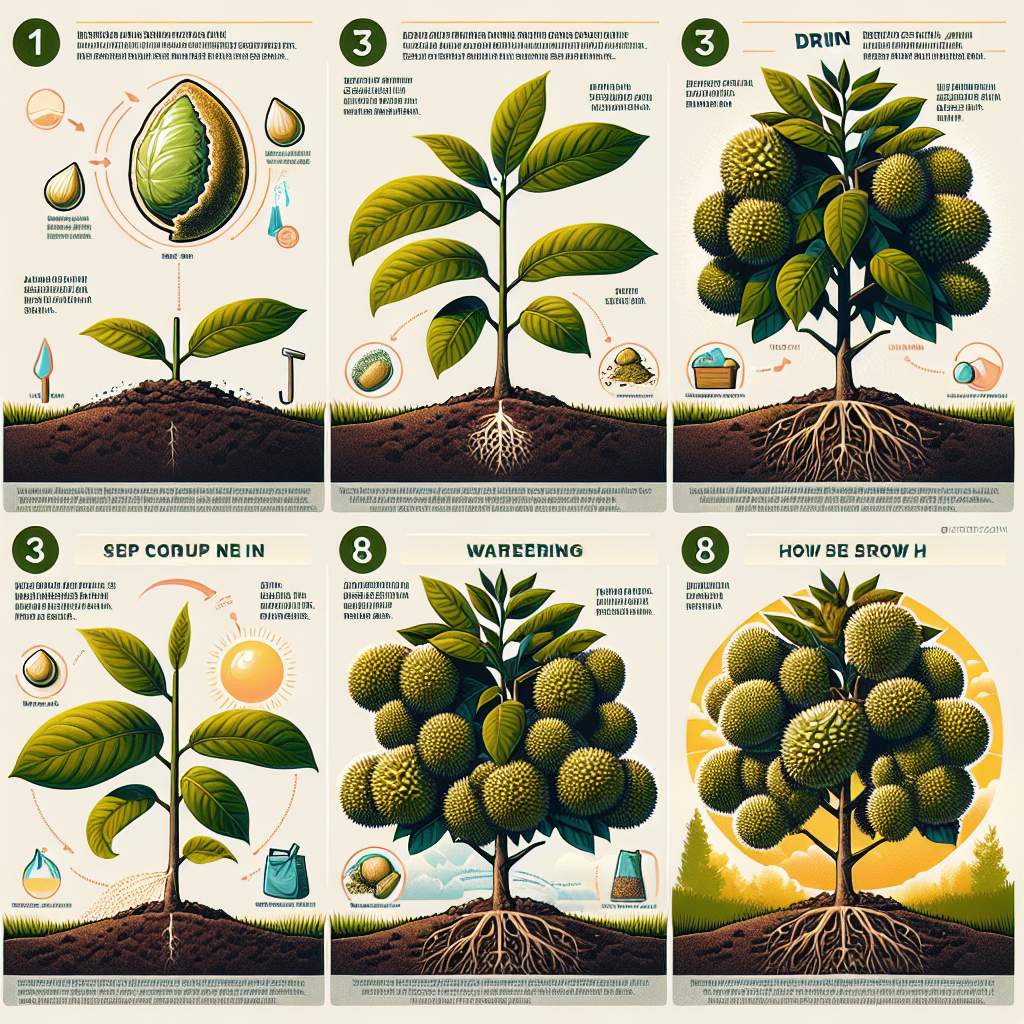
How to grow durian
Introduction to Growing Durian
Durian, often referred to as the "king of fruits," is celebrated for its unique flavor and distinct aroma. Native to Southeast Asia, this tropical fruit has captured the hearts of many fruit enthusiasts worldwide. However, growing durian can be a rewarding yet challenging endeavor. In this article, we will delve into the essential steps involved in how to grow durian, including soil requirements, planting techniques, and ongoing care tips.
Understanding Durian Plants
Before embarking on your durian-growing journey, it's vital to understand the characteristics of the durian tree. Durian trees can grow quite large, reaching heights of up to 50 meters. They typically have a dense canopy and dark green leaves. The flowers are unique and are best pollinated at night, making durian an interesting candidate for specialized gardening techniques.
Climate and Environmental Needs
Durian trees thrive in tropical climates and require specific environmental conditions to grow successfully:
- Temperature: Durian trees prefer temperatures between 25°C to 35°C (77°F to 95°F).
- Humidity: High humidity levels (around 75-90%) are crucial for healthy growth.
- Rainfall: An average of 2,000 mm of rainfall per year is ideal for durian cultivation.
- Sunlight: Full sun exposure is necessary for optimal growth and fruiting.
Choosing the Right Variety
There are several varieties of durian, each with its unique flavor profile and growing characteristics. Some of the popular varieties include:
- Musang King: Known for its creamy texture and strong flavor.
- D24: A favorite in Malaysia, known for its balance of sweetness and bitterness.
- Monthong: Praised for its large size and mild flavor, making it market-friendly.
Preparing the Site for Durian Cultivation
Proper site preparation is crucial for planting durian. Here are the essential steps to ensure a thriving durian garden:
Soil Requirements
Durian trees prefer well-draining soil rich in organic matter. The ideal pH level ranges from 6.0 to 7.5. Conduct a soil test to determine the necessary amendments:
- Organic Matter: Incorporate compost or well-rotted manure to improve soil fertility.
- Drainage: If the soil is clay-heavy, consider adding sand or grit to improve drainage.
- Adjust pH: Use lime to raise soil pH or sulfur to lower it, based on test results.
Site Selection
Choose a location that receives ample sunlight and is protected from strong winds. Ideally, the area should be around 10 meters from any structures or other trees to facilitate airflow and prevent disease.
Planting Durian Trees
Once the site is prepared, it’s time to plant your durian trees. Follow these steps for successful planting:
Best Time to Plant
The best time for planting durian trees is during the rainy season, as this provides the moisture needed for establishment.
Seedlings or Grafting
There are two primary methods for planting durians: using seeds or grafting:
- Seeds: If using seeds, ensure they are fresh and planted in a nursery for about 6-12 months before transplanting them to the orchard.
- Grafted Trees: Opting for grafted trees can lead to quicker fruiting, typically within 3-5 years.
Planting Technique
- Dig a hole that is twice the size of the root ball.
- Place the tree in the center of the hole, ensuring the root collar is above the soil level.
- Backfill the hole with soil, gently firming it around the base of the tree.
- Water thoroughly after planting to eliminate air pockets.
Caring for Your Durian Trees
The journey does not end with planting; ongoing care is crucial for durian tree health and productivity. Here are some important care tips:
Watering
Durian trees require consistent moisture, especially during their early years. Recommended watering practices include:
- Water young trees daily during dry spells.
- Reduce watering frequency for mature trees, ensuring the soil remains moist but not waterlogged.
Fertilization
Providing nutrients is vital for growth and fruiting. The typical fertilization routine involves:
- Use a balanced fertilizer (NPK 15-15-15) every 2-3 months.
- Incorporate organic fertilizers, such as compost or leaf litter, to promote soil health.
Pest and Disease Management
Durian trees can be susceptible to various pests and diseases. Observing and acting promptly can help mitigate problems:
- Pests: Common pests include fruit borers and leafhoppers. Use appropriate organic pesticides when necessary.
- Diseases: Watch for root rot and fungal infections. Ensure good drainage and airflow to reduce disease risk.
Pruning and Training
Pruning is vital for maintaining tree health and promoting productive growth. Tips include:
- Remove any dead or diseased branches to prevent the spread of infection.
- Thin out crowded branches to improve sunlight penetration and airflow.
Expectations and Harvesting
Durian trees typically begin fruiting within 3-5 years if grown from grafted seedlings, while seed-grown trees may take up to 10 years. Here’s what you can expect:
Indicators of Ripening
Understanding when to harvest is key to enjoying the best flavor. Signs of ripe durian include:
- Change in smell: A strong, pungent aroma indicates ripeness.
- Spines opening slightly: This is a good indicator that the fruit is ready.
- Fallen fruit: Once ripe, durian fruit may fall from the tree, signaling harvest time.
Harvesting Techniques
Harvesting durian requires care to prevent damage to both the fruit and the tree:
- Use a pole saw or long-handled clippers to cut the fruit from the tree.
- Wear protective clothing: The spines on durian are sharp and can cause injury.
Conclusion
Growing durian can be a fulfilling agricultural adventure, provided you pay close attention to the specific needs of the plant. From understanding environmental requirements to appropriately caring for your trees, the process may seem extensive but is entirely manageable. With patience and dedication, you can enjoy the ultimate reward of your efforts—ripe, delicious durians from your very own garden.
In summary, by following the guidelines outlined above, you can successfully navigate the process of how to grow durian, ensuring a fruitful and rewarding experience.
By Guest, Published on August 6th, 2024